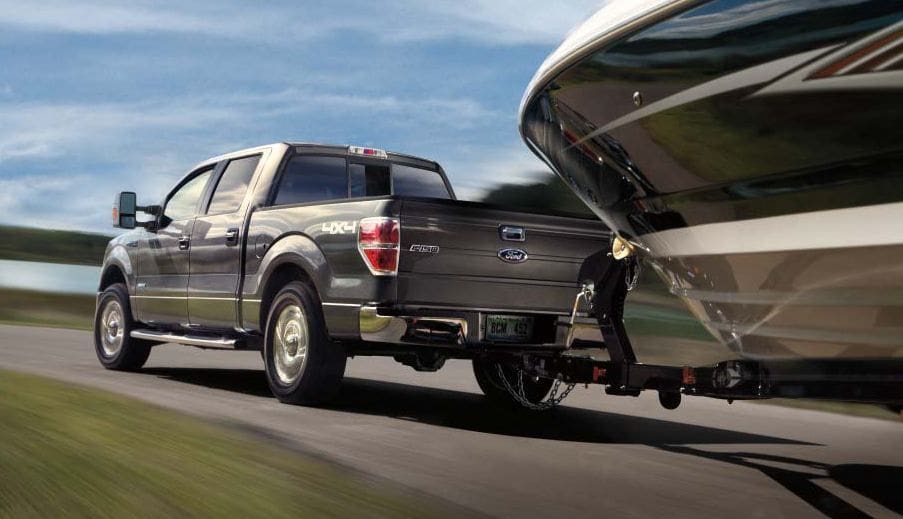Ford F-150 Towing and Hauling General Specifications
Check out this overview of hauling and towing; common questions are answered and specifications and maintenance schedules that will get you down the road with a load are provided.
This article applies to the F-150 (2004-2014).
Towing and hauling are the main reasons to own a truck, unless you just like the looks of one. Chances are, if you own an F-150, at some point you are going to use it to tow a trailer or haul some sort of heavy load. That kind of utility is what makes trucks so popular, and Ford has always prided itself on making trucks that lead the pack in towing and hauling capacity. But before you hook up that trailer or fill your truck bed with heavy stuff, check out these scheduled maintenance recommendations, answers to common questions, specifications, and towing capacities below. Everything you need to know before you tow is provided.
Scheduled Maintenance
Towing a trailer or hauling a load is what Ford classifies as "special operating conditions," which basically means that your truck will require a little more maintenance since it will experience more wear and tear over time. This generally applies only if you operate under these conditions most of the time you are driving the truck. Driving under special operating conditions means changing your oil more frequently, rotating tires more often, and checking for wear on related components, as well as changing other fluids more frequently, including transmission fluid and transfer case fluid. You can find your vehicle specific information in your owner's manual, or at Ford's web site.

What to Know Before You Tow
Before you buy, determine the weight of the trailer and cargo you intend to tow. This will allow you to select a vehicle that fits your needs. Don't exceed manufacturer's recommended weight limits, and make sure to follow duty maintenance schedules.
It is recommended by Ford that you select a trailer that has a separate braking system. Make sure that the trailer is equipped with lights that meet government regulations and that proper wiring is used. Always use safety chains when towing, which prevent the tongue from contacting the ground in the event the trailer is separated from the hitch.

Specifications and Towing Capacity
Be sure and check your truck's towing specifications before you venture out with a load to ensure your towing capacity is sufficient. These specs can vary greatly depending on what engine, axle ratio, cab, and drive your truck has. For example, a 2014 F-150 4x2 regular cab with a 3.7 V6 and 3.55 axle ratio has a maximum loaded trailer weight of 5,500 pounds. A 2014 4x4 SuperCrew with a 3.5 EcoBoost V6 and a 3.73 axle ratio has a maximum loaded trailer weight of a whopping 11,300 pounds. You can find your vehicle specific specifications through the related link below.

Common Questions
What is towing capacity?
Towing capacity is the weight of the trailer you can pull behind your vehicle without causing damage to the truck's engine, transmission, cooling system, and frame.
What is gross vehicle weight?
Gross vehicle weight is how much your vehicle weighs minus any cargo.
What is a payload rating?
Payload rating indicates how much weight you can put in the bed of the truck before it starts to get too close to the rear tires.
What is anti-sway control?
Anti-sway control is a part of the stability control system that uses electronic sensors to determine if a trailer is swaying, and then applies brake pressure on one wheel to bring it in line.
What is integrated trailer brake control?
This is an advanced system that controls the brakes on both the vehicle and the trailer when you apply them to enhance control and stability.

Related Site
- F-150 Towing Specifications - Ford.com






